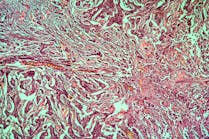Cancer remodels the architecture of our chromosomes so the disease can take hold and spread. With these renovations, cancer begins making a comfortable home for itself inside our cells, according to researchers at the University of Virginia as reported in a press release.
Others involved in the work include scientists from Northwestern University, University of Miami and Mayo Clinic. The researchers have published their findings in the scientific journal Genome Biology.
“Even when the genetic code in DNA sequence may largely remain the same, the three-dimensional structure of chromosomes in cancer can be very different from our normal cells,” said researcher Chongzhi Zang, a computational biologist with UVA’s Center for Public Health Genomics. “A better understanding of the cancer genome structure can give us insights for developing new drugs to specifically target the Achilles’ heel of each cancer.”
To make its desired changes inside our chromosomes, cancer relies on a protein called “CCCTC-binding factor,” or CTCF for short. CTCF occurs naturally in our cells. In healthy cells, it plays an important role in maintaining the chromosome structure and turning genes on and off as needed. But cancer, Zang found, highjacks CTCF for its own purposes. CTCF appears where it shouldn’t, and it doesn’t bind where it should. This alters the three-dimensional organization of our chromosomes and changes the way genes work.
To understand CTCF’s role in cancer, Zang and his team dove deep into genomic data collected from human tissues and cancer samples. They identified patterns of CTCF remodeling in six different cancers, including T-cell acute lymphoblastic leukemia, acute myeloid leukemia, breast cancer, colorectal cancer, lung cancer and prostate cancer.
The researchers validated their findings by looking specifically at T-cell acute lymphoblastic leukemia, but they say further research into changes into CTCF binding will help scientists better understand the origins of other cancers as well. (Faulty CTCF binding also has been linked with developmental disorders and other conditions, so understanding it may also offer important insights into those diseases as well.)
“The abnormal patterns of CTCF binding that we found is probably a signature existing in every cancer type,” Zang said. “These findings brought us one small step closer to fully unraveling the molecular mechanism of cancer, an extremely complex disease.”





